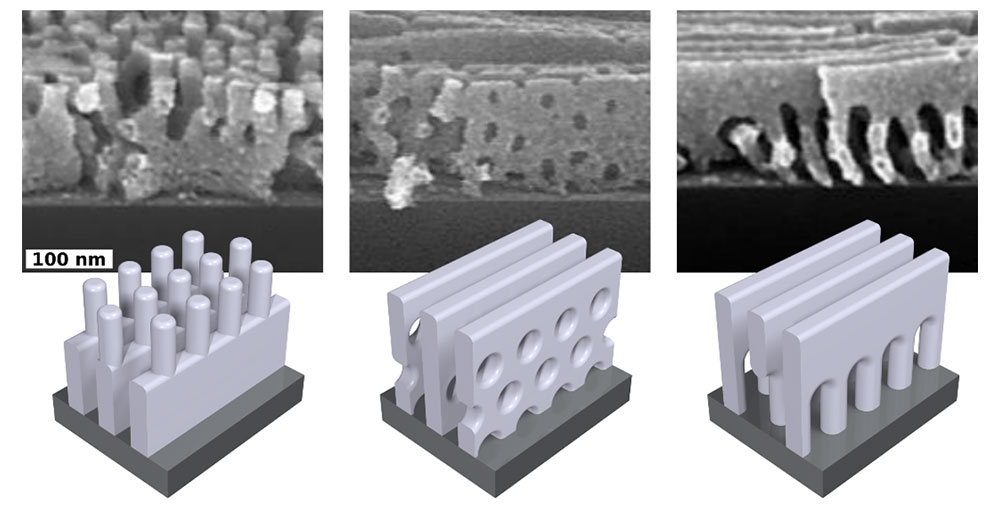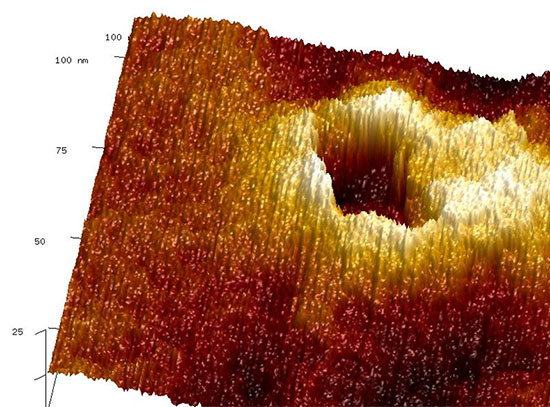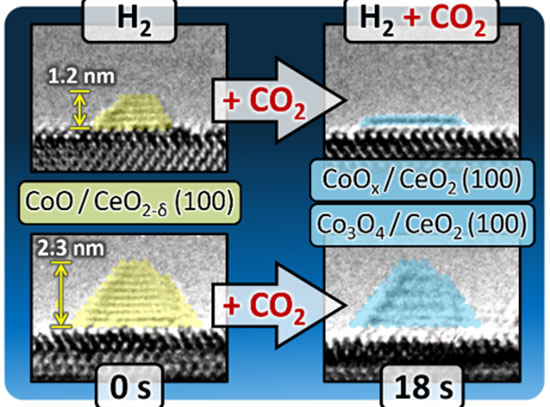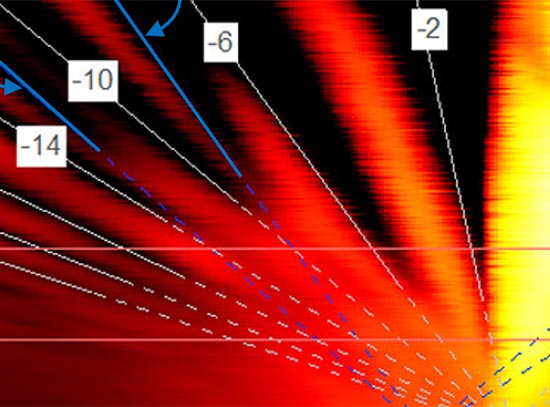Unlocking a Diversity of Self-assembled Nanostructures by Layering
January 31, 2023
 enlarge
enlarge
Layering, self-assembling materials can seed the formation of novel nanostructures, including parapets (left), perforated walls (center), and aqueducts (right).
Scientific Achievement
The Center for Functional Nanomaterials (CFN) researchers demonstrated how layering different self-organizing polymers can create a diverse library of new types of nanostructures with distinct motifs not present in any individual self-assembled layer.
Significance and Impact
Increasing the diversity and complexity of nanostructures that can be easily formed from a base set of simple materials provides an approach to the design of improved electrical and optical properties.
Research Details
Block copolymer thin films self-assemble into nanostructures—that is, they spontaneously form a precise structure at the nanoscale. However, the shapes that form in these materials are limited and simple. Researchers at Brookhaven National Lab (BNL) layered these simple self-assembling materials, allowing them to “seed” the initial state and guide the subsequent assembly. The researchers demonstrated how this leads to a greater diversity of structures, including a host of “non-native” structures—structures that are not seen for any of the starting materials.
This new technique thus allows one to use simple, commercially available starting materials to generate a diverse library of complex nanostructures, including nanoscale “parapets” and “aqueducts”. Moreover, the researchers showed how these new nanostructures can have improved properties—such as improved electrical conductivity arising from the connectivity at the nanoscale.
- Judicious choice of layering and processing conditions of block copolymer films allows controlled formation of new nanostructures.
- A diverse library of structures was demonstrated, including >10 structures that had never been seen before.
- The CFN Materials Synthesis & Characterization and Nanofabrication Facilities, BNL Scientific Data and Computing Center, and NSLS-II were used for this study.
Publication Reference
Russell, S.T., Bae, S., Subramanian, A., Tiwale, N., Doerk, G. Nam, C.-Y., Fukuto, M., Yager, K.G. “Priming self-assembly pathways by stacking block copolymers.” Nature Communications 13, 6947 (2022).
DOI: https://doi.org/10.1038/s41467-022-34729-0
OSTI: https://www.osti.gov/biblio/1898231
Brookhaven News: Scientists Build Nanoscale Parapets, Aqueducts, and Other Shapes
Acknowledgment of Support
This research was performed by the Center for Functional Nanomaterials (CFN) and used resources of the CFN and the National Synchrotron Light Source II (NSLS-II), which are U.S. Department of Energy Office of Science User Facilities, at Brookhaven National Laboratory under Contract No. DE-SC0012704. This work used computational resources managed by the Scientific Data and Computing Center, a component of the Computational Science Initiative, at Brookhaven National Laboratory.
2023-21266 | INT/EXT | Newsroom









